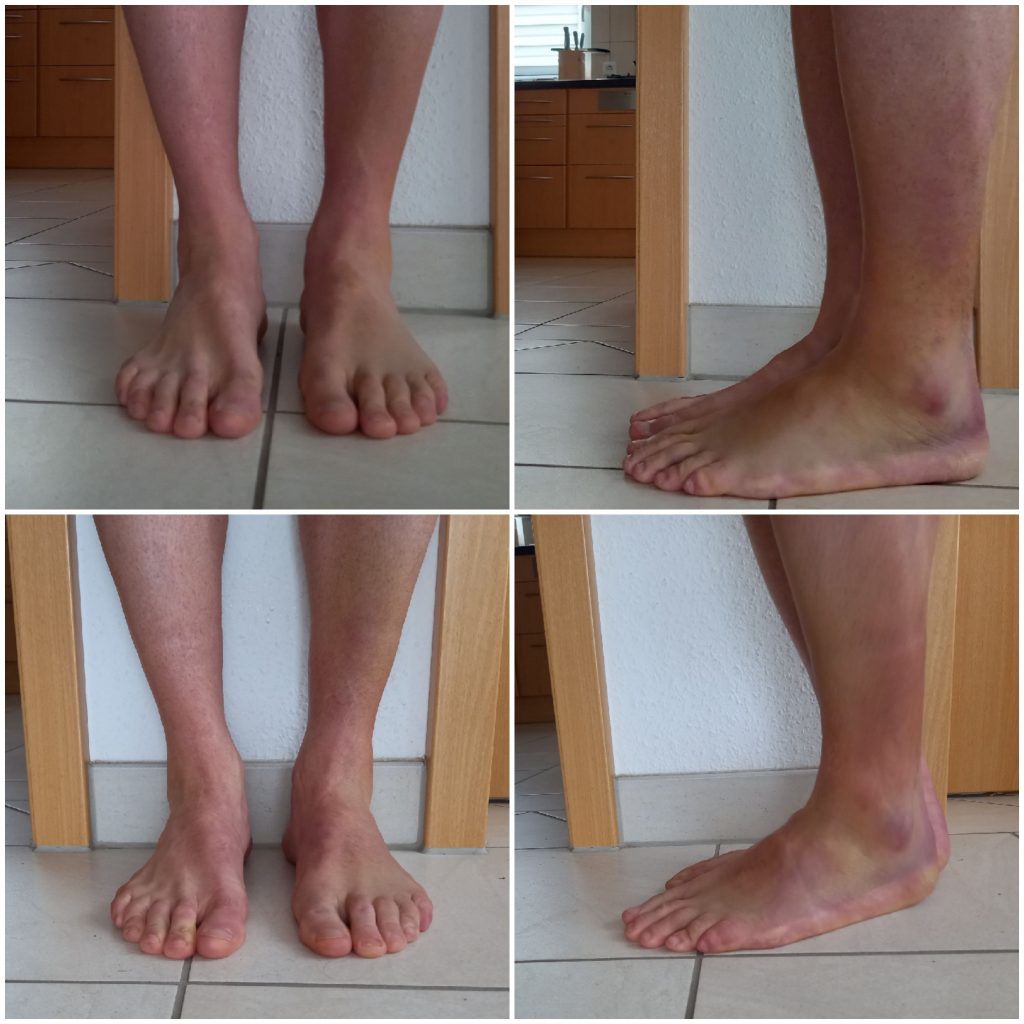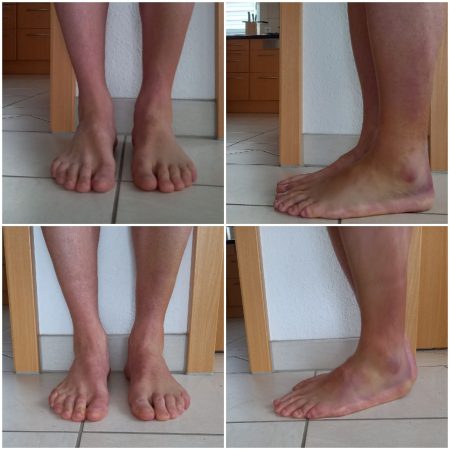
Injuries are part of the life of any sportsman/sportswoman, whether he/she is an amateur or a professional.
And injuries (more or less serious) have been and are part of my sporting life.
The last in chronological order was the double sprained right ankle and left ankle, a few days ago in the last race of a trail-running event in Ibiza (3 DIAS TRAIL IBIZA 2021 | 26,27 y 28 NOVIEMBRE | CARRERA PUNTUABLE UTMB | MAS QUE UN MARATÓN).
This last episode, and the following days, give me the inspiration for this article.
The management of injuries
In fact, I have wanted to write something about injuries for a long time, but above all about their management which is the real challenge to face.
I don’t know if what is written is trivial, already said or useless.
In Italian, we say “sticazzi”, and therefore I write what I think anyway, above all having to have seen directly and indirectly a bad management of injuries, whatever it is.
Obviously, I do not enter the medical field which is not within my competence and is always subjective, from person to person, from injury to injury.
What I do today is illustrate my 3 P Rule, once an injury has occurred.
3 P Rule stands for Passion, Patience and Perseverance.
1 P for Injuries: Passion
Having a passion for what you do is the first rule for recovering from an injury.
However, many make a self-evaluation mistake in the concept of passion.
What do I mean? To explain it, I use me as a reference.
Many think that mine is a pure passion for running, trail-running and sport in general. I say this because, in previous injuries, with no complaints on my part about not being able to run, many people have approached me with the phrase “I’m sorry for you“.
This has always made me smile and above all reflect. Then let’s clarify.
The primary passion
I love and certainly have a great passion for sport.
But is it my primary, fundamental passion?
Not, absolutely not.
My primary passion is the desire to explore, the curiosity deriving from knowledge.
Running, cycling, and many other sports are a pure and exclusive way to satisfy this passion.
They are a tool!!
And they are just as good as reading, photography, studying. And many other things I do every day to satisfy my primary passion.
If I cannot use the running as a tool for a period, I use something else.
And I can live with that, without any problem.
This is a fundamental concept to understand. If you don’t understand, you only think in one direction: you can’t run, you have no alternative.
And this is a serious mistake in my humble opinion.
So, my suggestion is to ask yourself what your primary passion is, the one that ALSO (and not only) leads you to run.
2 P for Injuries: Patience
Patience is an element that many are missing, especially the younger ones or those who have recently become enthusiastic about sport and are then blocked by an injury.
But patience is an art that can be safely trained.
And the starting point is precisely the concept expressed above about passion.
If that is clear, then you are well under way with patience.
The next step is to distribute patience in two possible scenarios.
The first scenario for the patience
The first is the most recommended and most professional one.
In short:
- you have an injury
- you have a medical check of what happened
- you receive a diagnosis
- you receive a recovery path made up of many phases and a timeline
- you gradually begin your recovery following this timeline
- you respect strictly this timeline and the recommended steps
Therefore, patience lies in the awareness that the path will be long (depending on the severity of the injury) and that it must be a gradual and serial path, without shortcuts.
The second scenario for the patience
The second is the less professional one (so, do not follow it!). It is the one I usually follow, because I am also aware that I am an amateur and that I have a clear understanding of my own responsibilities.
But, above all, I am very clear what my primary passion is.
In short:
- you have an injury
- you have a medical check of what happened
- you receive a diagnosis
- you receive a recovery path made up of many phases and a timeline
- you gradually begin your recovery following this timeline
- you do not think every single day about this timeline
- you do not think every single day about the recovery as primary task
- you do not respect strictly this timeline (either in one direction or the other)
As an example (in blue my reactions):
- I twisted both ankles, the left one very badly. For 3 days I could not even walk. I just worked at my PC for hours.
- After one week I did a radiography and an MRT. I was neither in a hurry nor agitated to get the results
- The ligaments of the left ankles are severely damaged: one is broken, another is strained. No surprises
- It is required a surgery (p.s. I should do it since 2015). We have not yet analyzed the right one, whose status could be even worse. 😉
- I will do the surgery in mid-January 2022 (date is fixed!). One month from now? I have also other priorities to fix and to do in between! 🙂
- If I operate both (of course not simultaneously), the full recovery time will oscillate between 4 to 5 months. I am already looking to races in Autumn. 🙂
- In the meantime (between now and the surgery), I should not run. And what am I doing?
I follow this last guideline, but with a certain flexibility, balancing the real status of the day, of the moment. And not a theoretical one.
The basic message: positivity and serenity
Of course I do not run.
But, do I stop physically & mentally? Do I cry? Do I complain? Do I write what I cannot do?
None of this.
I do many other things.
For example, in the last week I started to walk & hike using a proper anklet and bandage, spending most of the time doing photography, and checking out new trails to run in the future months. Sometimes I hiked 3-5 km, once almost 10 km. It did not really matter.
Am I doing something wrong?
It is always a matter of perspective.
Many people focus on what they cannot do; I usually focus on what I can do.
In general, no one can discuss an event that does not allow us to do what we like.
But, of course, we are the only ones responsible for how we decide to deal with it: with positivity and serenity or with negativity and frustration.
I try to belong to the first category…always.
3 P for Injuries: Perseverance
Do you know the origin of this word?
The word perseverance comes from the Latin and it is one of the favorite words in my life vocabulary.
It means “Constancy and firmness in pursuing one’s goals or in keeping faith with one’s purposes; it is a virtue that commits mankind to fight for the achievement of good without succumbing to obstacles and without being overcome by fatigue and discouragement”.
If you think about it, the nice thing about this definition is that there is no time limitation.
I believe that many are unable to acquire this virtue because they want to embed it in a defined temporal space.
And they are defeated by discouragement, fatigue and pain, because they have not understood that we must not fix a temporal space.
Time limit and flexibility
If you are told after an injury that healing will take 6 weeks or 6 months, forget about this time information immediately. Or rather keep it in mind, but don’t become a slave to it.
Especially if you are a non-professional athlete, you should focus on a goal without a strict time limitation.
I have a lot of goals but I try to avoid giving them a strict time limit.
In sport, for example, I would like to run and finish the UTMB or the Boston or New York marathon. I think about it every year when I plan the season, but if they don’t happen then it’s not a drama.
In the meantime, I have achieved and am still achieving many other goals, sporting, private and working.
And as I often said to a person who is no longer here: “learn to plan, but always include a large portion of flexibility in planning”.
And, after all these words, I’m going to do exactly this, looking to the next 2022 season, regardless of injuries, any operations, and related recovery times.
I hope this article ws useful. And in any case, always enjoy what you do! 😉
Andrea
p.s. you can apply the 3 P’s rule to anything else in life, such as making a dream come true!
Original post in english language. For other languages, please open with a web browser (i.e. Chrome) and apply the automatic translation.
Related projects and articles
You might find of interest other articles with hints (always for free :-)) here: Trail Running Tips | EmigranTrailer
Below two examples:



